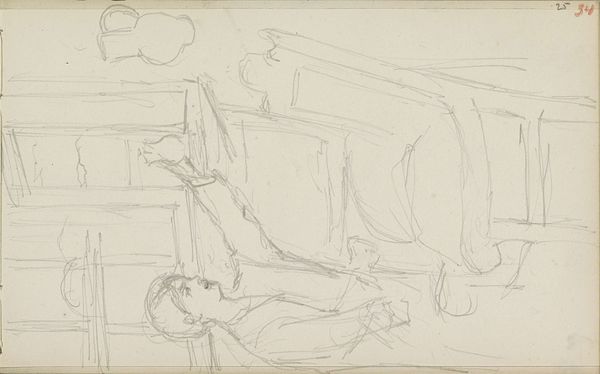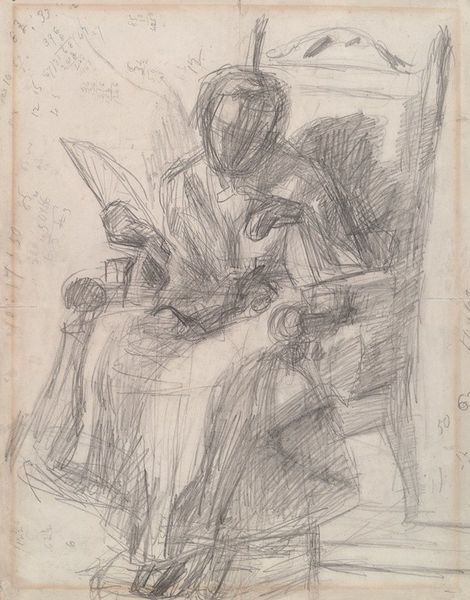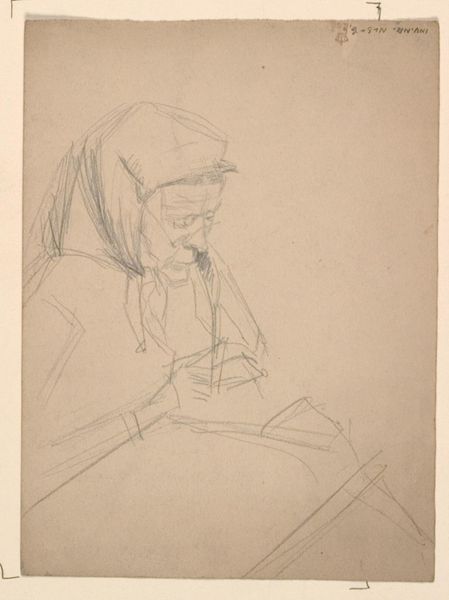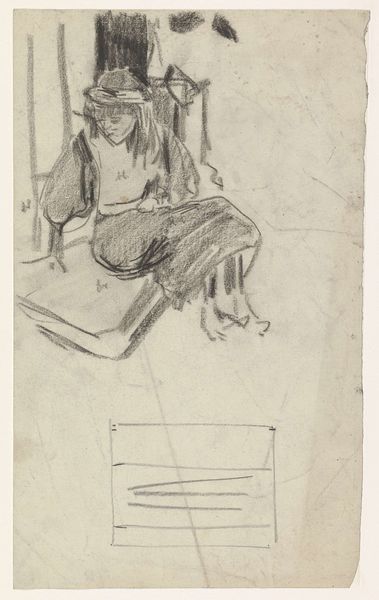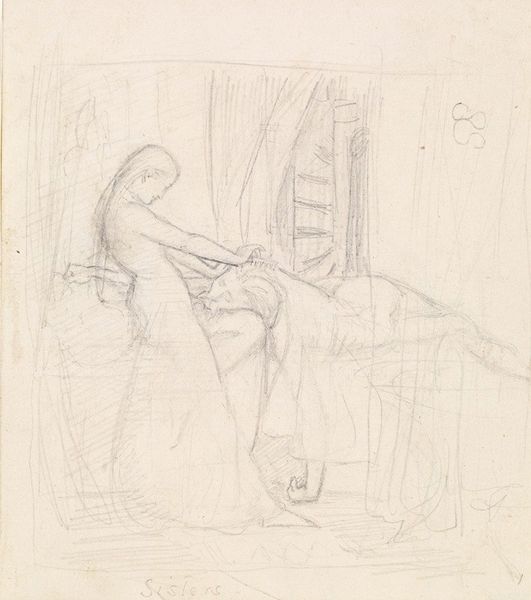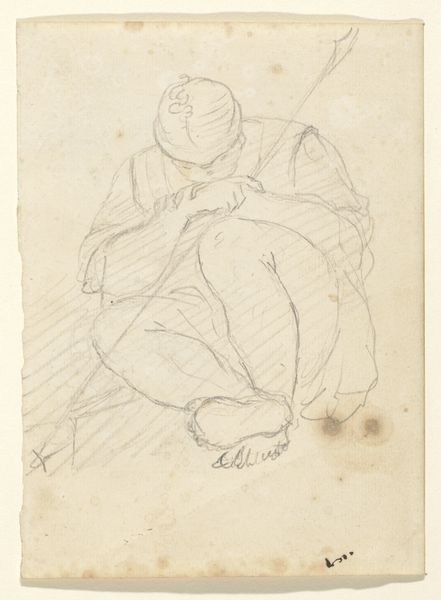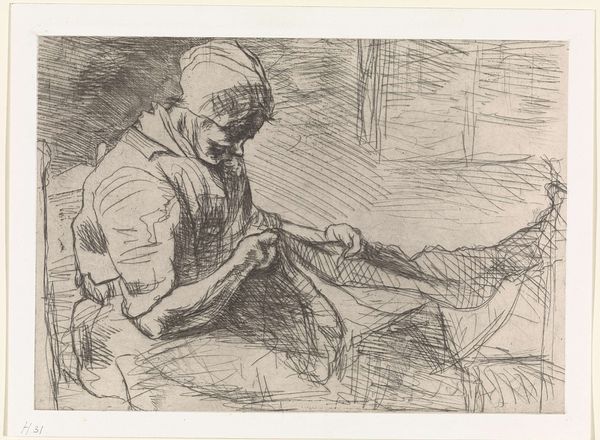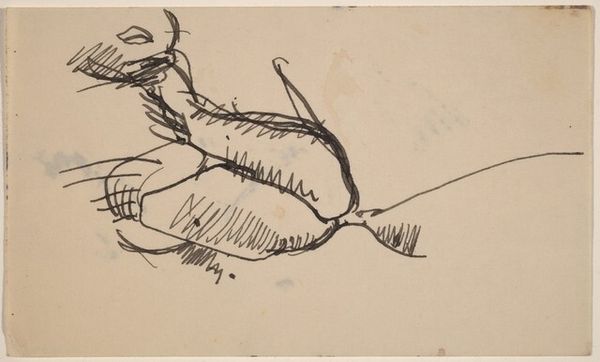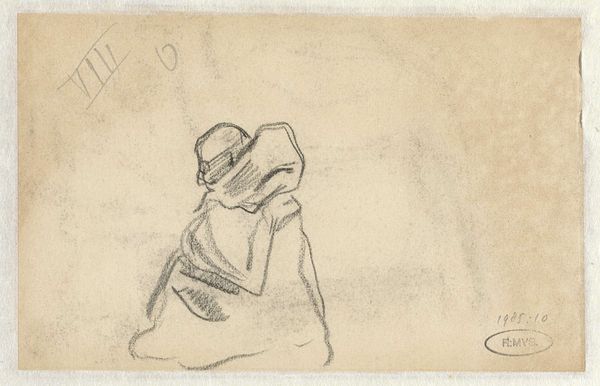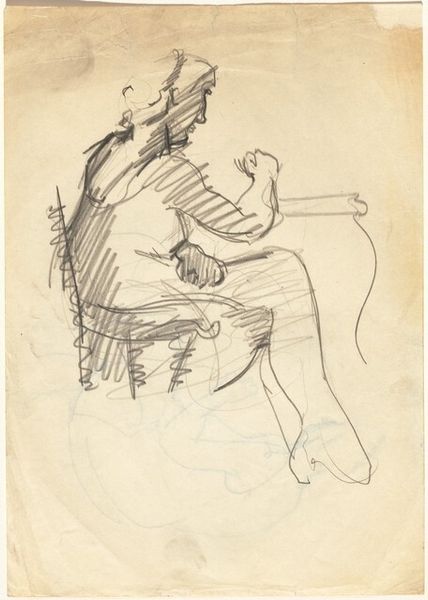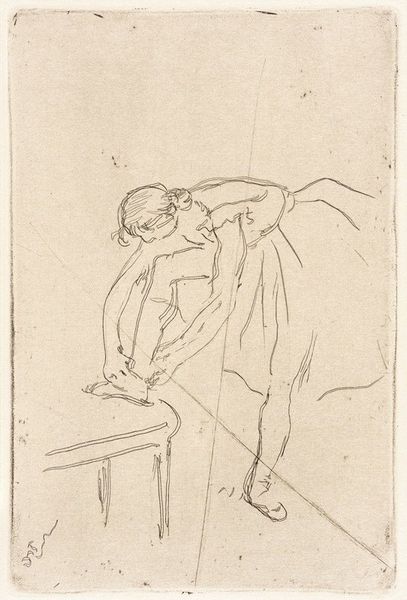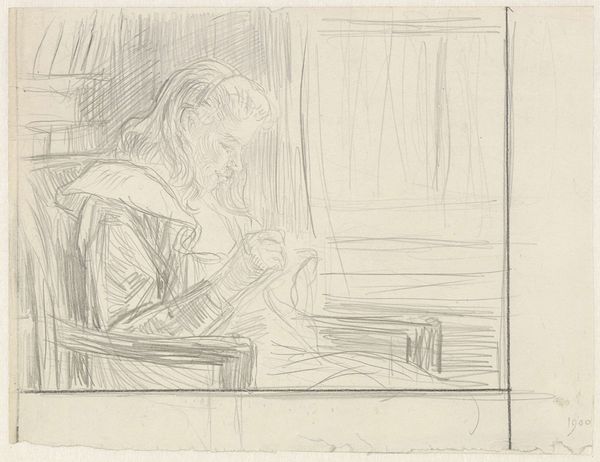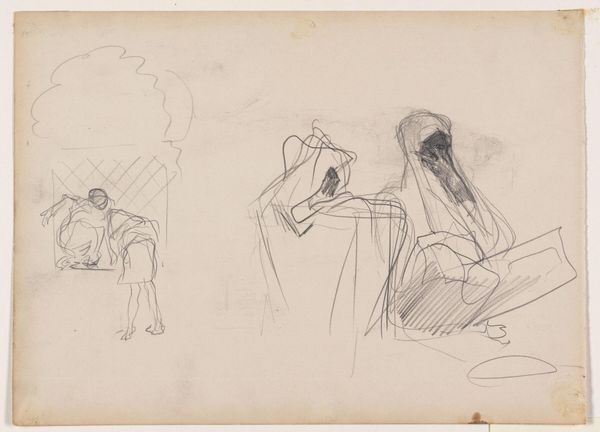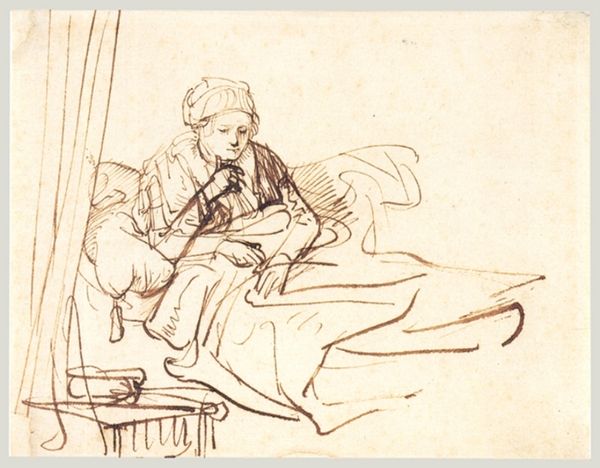
drawing, pencil
#
portrait
#
abstract-expressionism
#
drawing
#
figuration
#
pencil
Dimensions: sheet: 13.02 × 13.97 cm (5 1/8 × 5 1/2 in.)
Copyright: National Gallery of Art: CC0 1.0
Curator: This is Franz Kline's "Woman Seated at a Desk," created in 1945. It's a pencil drawing that captures the essence of a figure, bordering on the abstract. Editor: My immediate feeling is one of melancholic introspection. The lines are hesitant, searching almost, giving the piece a vulnerable quality. Curator: It's interesting you say that. Kline, while later known for his bold, gestural abstract expressionism, often grounded his work in figuration, and this drawing offers a glimpse into his process of deconstruction and reassembly. Editor: Absolutely. You can see how he reduces the figure to a network of interconnected lines, a web of associations. The woman herself remains anonymous, a vessel for projected feeling. There is a lot of weight to the negative spaces within the lines. Curator: And consider the historical context. This work emerged just after the Second World War. The ambiguity, the fragmented forms, could be interpreted as reflecting the psychological impact of global conflict and individual isolation. The sitter seems withdrawn from external reality. Editor: That's a compelling point. Abstraction often provided a language for grappling with trauma when traditional representation felt inadequate. But in what spaces would people have seen artwork such as this during that time period? I wonder how widely art with a tendency towards "fragmented" and "withdrawn" was perceived at the time. Curator: Post-war New York fostered a growing gallery scene that helped cultivate and promote abstract expressionism as something quintessentially American. Galleries supported artists as cultural emblems who promoted ideals of individual freedom, Editor: To think about the piece in terms of freedom reminds us that abstraction offers not only a way to express complex emotional realities, but to push back against expectations of clear narratives. There's a rebellious, or at least inquisitive, spirit in how Kline avoids easy answers. Curator: This close engagement really enhances my appreciation of the push-pull between the interior life of the woman at the desk and the socio-historical context of the time period. Editor: And for me, it sparks a renewed interest in seeing beyond Kline's famous large-scale abstractions. These smaller works illuminate so much about his overall project.
Comments
No comments
Be the first to comment and join the conversation on the ultimate creative platform.
